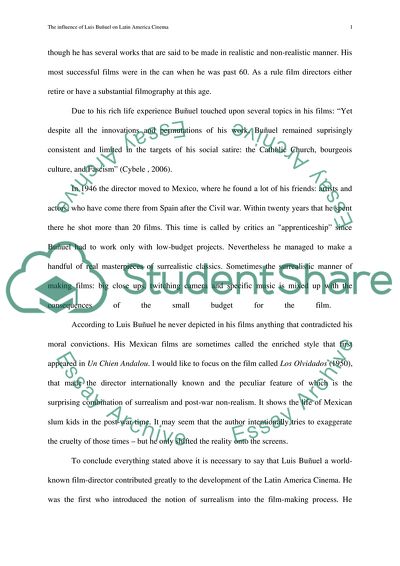The influence of Bunuel on Latin American Cinema Essay. Retrieved from https://studentshare.org/visual-arts-film-studies/1570021-the-influence-of-bunuel-on-latin-american-cinema
The Influence of Bunuel on Latin American Cinema Essay. https://studentshare.org/visual-arts-film-studies/1570021-the-influence-of-bunuel-on-latin-american-cinema.


